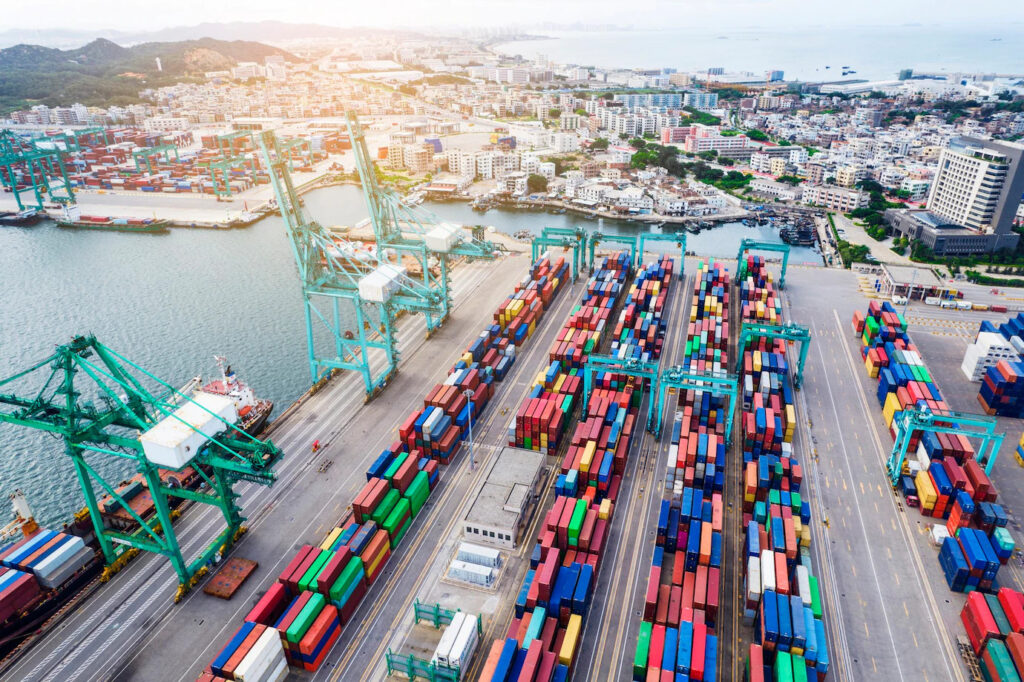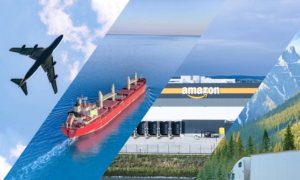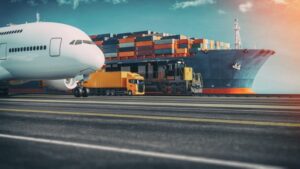China is the world’s largest exporter of goods, accounting for about 14% of global exports in 2020. It is also the world’s largest manufacturing hub, producing 36% of the world’s electronics and a large share of other labor-intensive products such as clothing, footwear, toys and furniture. China’s dominance in global trade and manufacturing has earned it the nickname of the “factory of the world”.
But how did China achieve this status? And what are the implications for the shipping industry and the global supply chain? In this article, we will explore these questions and examine some of the challenges and opportunities that China faces as it continues to shape the world economy.
global supply chain
How China Became the “Factory of the World”

China’s rise as a global manufacturing powerhouse can be traced back to its economic reforms and opening up in the late 1970s, which unleashed its vast potential of cheap labor, abundant resources, large domestic market and favorable policies. China joined the World Trade Organization (WTO) in 2001, which further integrated it into the global economy and gave it access to new markets and technologies.
global supply chain
Some of the key factors that enabled China to become the “factory of the world” are:
- Low labor costs: China has a large and relatively low-skilled workforce that can produce labor-intensive goods at a fraction of the cost of other countries. According to the World Bank, China’s average wage in 2019 was $10,098, compared to $63,093 in the US and $42,330 in Germany. China also has a flexible labor market that can adjust to seasonal and cyclical fluctuations in demand.
- Economies of scale: China has a huge domestic market that provides a strong base for its manufacturing sector. It also benefits from economies of scale by producing large quantities of standardized goods for export markets. This allows China to lower its unit costs and increase its efficiency and productivity.
- Robust supply chain and raw materials ecosystem: China has developed a comprehensive and interconnected network of suppliers, distributors, logistics providers and infrastructure that supports its manufacturing sector. It has also secured access to raw materials and energy sources from around the world, such as oil from the Middle East, iron ore from Australia, copper from Chile and rare earths from Africa.
- Favorable policies and incentives: China has implemented various policies and incentives to attract foreign investment and technology transfer to its manufacturing sector. These include special economic zones (SEZs), tax breaks, subsidies, preferential loans, streamlined regulations and intellectual property protection. China has also invested heavily in research and development (R&D) and innovation to upgrade its manufacturing capabilities and move up the value chain.
How China Impacts the Shipping Industry and the Global Supply Chain

China’s role as the “factory of the world” has significant implications for the shipping industry and the global supply chain. Some of these are:
- High demand for container shipping: China is the largest importer and exporter of containerized goods, accounting for about 28% of global container throughput in 2019. China’s trade with other countries generates high demand for container shipping services, especially on the main east-west routes between Asia and Europe/North America. According to Drewry, a maritime research consultancy, China’s container trade volume grew by 4.2% in 2020 despite the COVID-19 pandemic, while global container trade volume declined by 1.7%.
- Dominance in shipbuilding: China is also the world’s largest shipbuilder, accounting for about 40% of global shipbuilding output in 2020. China has a competitive edge in shipbuilding due to its low labor costs, advanced technology, large capacity and government support. China mainly builds dry bulk carriers, tankers, containerships and offshore vessels for domestic and foreign customers. According to Clarksons Research, a maritime intelligence provider, China had an order book of 26.3 million compensated gross tons (CGT) at the end of 2020, representing 37% of the global order book.
- Influence on maritime policies and standards: China is an active participant in international maritime organizations and forums, such as the International Maritime Organization (IMO), the International Association of Ports and Harbors (IAPH) and the Baltic and International Maritime Council (BIMCO). China plays a key role in shaping maritime policies and standards on issues such as safety, security, environmental protection, trade facilitation and digitalization. For example, China is a signatory to the IMO’s Hong Kong Convention on ship recycling, which aims to ensure safe and environmentally sound disposal of ships at the end of their life cycle.
- Leadership in maritime initiatives: China is also a leader in launching and promoting maritime initiatives that aim to enhance regional and global connectivity, cooperation and development. The most prominent example is the Belt and Road Initiative (BRI), which is China’s ambitious plan to build a network of infrastructure projects across Asia, Europe, Africa and beyond. The BRI includes several maritime components, such as the Maritime Silk Road, the China-Pakistan Economic Corridor, the China-Indonesia Maritime Cooperation Fund and the China-Africa Infrastructure Cooperation Plan. According to the American Enterprise Institute, a think tank, China has invested or committed $776 billion in BRI projects as of June 2020, of which $146 billion are in the transport sector.
What are the Challenges and Opportunities for China as the “Factory of the World”

China’s role as the “factory of the world” is not without challenges and opportunities. Some of these are:
- Rising labor costs and competition: China’s labor costs have been rising steadily over the years, eroding its competitive advantage in labor-intensive manufacturing. According to the International Labour Organization (ILO), China’s average hourly labor cost in manufacturing increased from $1.20 in 2008 to $6.50 in 2019, while Vietnam’s increased from $0.48 to $2.38 and India’s from $0.62 to $1.46. China also faces increasing competition from other emerging economies, such as Vietnam, Bangladesh, India and Indonesia, that offer lower labor costs, preferential trade access and growing domestic markets.
- Trade tensions and protectionism: China’s trade relations with some of its major trading partners, such as the US, the EU and Australia, have deteriorated in recent years due to various disputes over trade practices, market access, intellectual property rights, human rights and geopolitical issues. These disputes have resulted in tariffs, sanctions, restrictions and boycotts that have disrupted trade flows and increased uncertainty for businesses and consumers. China also faces growing protectionism and nationalism from some countries that seek to reduce their dependence on China’s manufacturing and diversify their supply chains to other regions or sources.
- Environmental and social concerns: China’s manufacturing sector has been criticized for its negative impacts on the environment and society, such as pollution, greenhouse gas emissions, resource depletion, waste generation, labor exploitation and human rights violations. China has taken steps to address these concerns by implementing stricter environmental regulations, promoting green manufacturing, investing in renewable energy sources, improving labor standards and enhancing social welfare. However, these measures also entail higher costs and compliance burdens for manufacturers and may affect their competitiveness and profitability.
- Technological innovation and upgrading: China has been pursuing technological innovation and upgrading as a strategic goal to enhance its manufacturing capabilities and competitiveness. China aims to become a global leader in advanced manufacturing sectors such as artificial intelligence (AI), biotechnology, robotics, aerospace, new energy vehicles and 5G. China has invested heavily in R&D and innovation, supported by government policies, incentives and funding. China has also acquired foreign technologies through mergers and acquisitions (M&A), joint ventures (JV) and technology transfer agreements. However, China also faces challenges such as intellectual property protection, quality standards, market acceptance and international cooperation.
Conclusion
China’s role as the “factory of the world” has been a remarkable achievement that has transformed the global economy and society. China has leveraged its comparative advantages in labor costs, economies of scale, supply chain ecosystem and favorable policies to become the world’s largest exporter of goods and a major player in the shipping industry.
However, China also faces various challenges that may affect its future prospects as the “factory of the world”. These include rising labor costs and competition, trade tensions and protectionism, environmental and social concerns and technological innovation and upgrading.
China will need to adapt to these changing circumstances by pursuing structural reforms, enhancing resilience and sustainability, fostering innovation and diversification and strengthening cooperation with other countries.
The shipping industry will also need to monitor closely how China’s role as the “factory of the world” evolves over time and what implications it may have for global trade patterns, demand for shipping services, maritime policies and standards and maritime initiatives.
global supply chain





